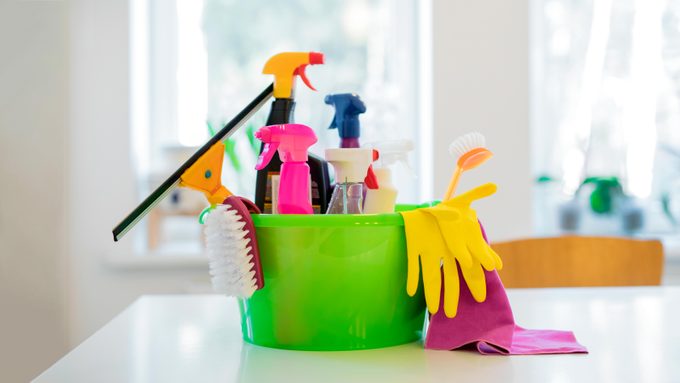Sanitize vs. Disinfect: What’s the Difference?
Updated: Jun. 23, 2022
Become a better cleaner by knowing the appropriate cleaning terms.

Knowledge is important when it comes to cleaning
What does cleaning really mean? Even if you’re well-versed in these cleaning mistakes that can backfire, you might struggle with the answer. When looking at cleaning products, have you ever used the words “sanitize” and “disinfect” interchangeably? Because they actually mean very different things. Here’s what you need to know about these terms that aren’t, in fact, interchangeable.
What’s the difference between cleaning, sanitizing, and disinfecting?
If you’ve been using these terms without knowing their meaning, you’re not alone. According to the CDC, cleaning “removes germs, dirt, and impurities from surfaces or objects.” The CDC states that sanitizing “lowers the number of germs on surfaces or objects to a safe level, as judged by public health standards or requirements. This process works by either cleaning or disinfecting surfaces or objects to lower the risk of spreading infection.” Lastly, the CDC says disinfecting “works by using chemicals to kill germs on surfaces or objects. This process does not necessarily clean dirty surfaces or remove germs, but by killing germs on a surface after cleaning, it can further lower the risk of spreading infection.” Basically, cleaning removes germs, sanitizing lowers the number of germs, and disinfecting kills germs.
Why is it important to know the difference?
By learning the difference between cleaning, disinfecting, and sanitizing, you’re becoming smarter in your choices of which products to use on various surfaces. Cleaning a dirty floor shouldn’t require harsher chemicals that, for example, might be better suited to disinfecting toilets. To clean a surface, the CDC recommends removing germs by using soap and water. To sanitize surfaces, the U.S. Department of Agriculture recommends cleaning them first with soap and water. After that, “you can sanitize them with a solution of 1 tablespoon of unscented, liquid chlorine bleach in 1 gallon of water.” To disinfect a surface, the CDC advises (among other methods) using household bleach solutions, and in order to make sure it’s effective the surface should remain wet for a few minutes to ensure germs are killed. Here are 10 ways you’re not using bleach—but should be.
Why it’s important to wash your hands
Even when there’s not a pandemic spreading, the CDC recommends you use soap and water to wash your hands and do so for 20 seconds. While it seems simple, washing your hands is important in stopping the spread of diseases. It’s so important, in fact, that you can prevent 15 diseases just by washing your hands.
